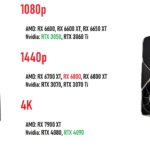Key Takeaways:
- Low Risk: Start a merchandise business with minimal upfront investment.
- Customization Options: Go beyond t-shirts to include custom embroidery and unique designs.
- AI Assistance: Use AI tools to generate and refine your designs.
- Shipping Times: Understand and communicate realistic shipping expectations.
- Personal Use: Order custom products for yourself or special events without bulk commitments.
Have you ever dreamed of designing your own custom sweatshirt, coffee mug, or t-shirt to sell online? You’re not alone! With the rise of print on demand (POD), it’s easier than ever to turn your creative ideas into actual products and start an online store. Whether you’re looking to make some extra cash or dive into a new business venture, print on demand offers a low-risk way to test out your product ideas without holding any inventory. But before you jump in, there are a few key things you need to know to ensure your success. Let’s break it down!
What is Print on Demand?
Print on demand is a business model that allows you to create custom products without the hassle of managing inventory. When a customer places an order, the product is printed and shipped directly to them. This means you don’t need to invest in large quantities of stock upfront or worry about storing unsold items.
The Low-Risk Advantage
One of the biggest benefits of print on demand is the low financial risk. Traditional manufacturing often requires ordering large quantities of a product, which can be expensive and risky if the products don’t sell. With POD, you only pay for the items after they’re sold. This minimizes your initial investment and allows you to test different designs and products without a hefty financial commitment.
Customization Beyond T-Shirts
While many people associate print on demand with custom t-shirts, the possibilities are far broader. You can also create:
- Custom Sweatshirts: Perfect for adding personal or branded designs.
- Coffee Mugs: Ideal for unique artwork or funny quotes.
- Phone Cases: A trendy way to offer personalized accessories.
- Posters and Art Prints: Showcase your creative designs on home decor items.
And here’s a surprise: you can even offer custom embroidery! Embroidery adds a premium touch to products and allows you to charge more for high-quality, personalized items.
Getting Started with Print on Demand
Ready to dive into print on demand? Here’s a step-by-step guide to help you get started:
1. Choose Your Print on Demand Platform
There are several print on demand services available, each with its own set of features and products. Some popular options include:
- Gelato: Known for its extensive range of products and fast local fulfillment.
- Printful: Offers a broad selection of items and integrates seamlessly with many e-commerce platforms.
- Teespring: Ideal for creators looking to launch their own branded merchandise.
2. Design Your Products
Creating appealing designs is crucial to your success in the POD business. Here are some tips for designing products that will stand out:
- Keep It Simple: Often, less is more. Simple, bold designs tend to be more versatile and appealing.
- Use AI Tools: AI can help you generate and refine designs. Tools like DALL·E or MidJourney can assist in creating unique artwork or illustrations based on your ideas.
- Create Samples: Order samples of your products before you start selling. This will help you ensure the quality meets your standards and give you a better idea of how your designs will look in real life.
3. Set Up Your Online Store
Once you have your designs ready, it’s time to set up your online store. Here’s what you need to do:
- Choose an E-Commerce Platform: Platforms like Shopify, WooCommerce, and Wix offer easy integration with print on demand services.
- Create Product Listings: Write compelling descriptions, upload high-quality images of your products, and set competitive prices.
- Promote Your Store: Use social media, email marketing, and other strategies to drive traffic to your store.
Managing Expectations: Shipping and Delivery
One thing to keep in mind with print on demand is that shipping times can be longer than with traditional retail. This is because products are made to order. Here’s how you can manage customer expectations:
- Communicate Clearly: Make sure to provide accurate shipping estimates on your website and keep your customers informed about their order status.
- Be Transparent: Let your customers know about the typical production and shipping times for your products.
- Offer Tracking: Provide tracking information so customers can monitor their order’s progress.
Using Print on Demand for Personal Use
Print on demand isn’t just for selling products. You can also use it to create custom items for yourself or special events. Here are a few ideas:
- Custom Gifts: Design personalized mugs or t-shirts for birthdays, weddings, or other celebrations.
- Event Merchandise: Create custom apparel for events like family reunions or sports teams.
- Personal Projects: Order custom items with your own designs or artwork to decorate your home or office.
Legal Considerations: Copyright and Trademarks
When creating custom products, it’s essential to respect copyright and trademark laws. Avoid using:
- Brand Logos: Don’t use trademarks or logos from well-known brands (like Nike) on your products.
- Celebrity Images: Refrain from using images or likenesses of celebrities unless you have explicit permission.
Instead, focus on creating original designs or use AI tools to help you brainstorm and develop unique ideas.
Conclusion
Print on demand offers a fantastic opportunity for anyone looking to create and sell custom merchandise with minimal upfront costs. By understanding the key aspects of POD, from selecting the right platform to designing eye-catching products and managing shipping expectations, you can set yourself up for success. Remember, the beauty of print on demand is its flexibility—whether you’re testing out a new business idea or just creating something special for yourself, the possibilities are endless.
So, what are you waiting for? Start exploring the world of print on demand today and bring your creative ideas to life!
The Ultimate Guide to Print on Demand: Everything You Need to Know
Are you curious about starting your own online store but worried about the upfront costs and inventory hassles? Print on Demand (POD) might be the perfect solution for you! This comprehensive guide will walk you through everything you need to know about POD, from basic concepts to practical tips for success.
What is Print on Demand?
Print on Demand is a business model that allows you to create and sell custom products without the need to hold inventory. Instead of buying large quantities of items upfront, you work with a POD provider who prints and ships products only after a customer places an order. This way, you avoid the risk of overstock and high upfront costs.
Benefits of Print on Demand
- Low-Risk Investment: You don’t need to invest heavily in stock or worry about unsold inventory. Start with minimal upfront costs and scale up as your business grows.
- No Inventory Management: Forget about warehousing and stock management. Your POD provider handles all the logistics, leaving you to focus on marketing and sales.
- Custom Products: Offer a wide range of personalized products, from custom t-shirts and sweatshirts to coffee mugs and more.
- Flexibility: Experiment with different designs and products without committing to large orders. It’s a great way to test market trends and customer preferences.
Custom Products: What Can You Create?
POD allows you to design and sell a variety of custom products. Here’s a closer look at some popular options:
Custom Sweatshirts
Sweatshirts are a cozy and popular item for personalization. Whether you want to add a funny slogan, a motivational quote, or your own design, custom sweatshirts are a great choice for seasonal promotions and casual wear.
Custom Coffee Mugs
Who doesn’t love a personalized coffee mug? Custom mugs make excellent gifts and can be tailored with unique designs, names, or messages. They’re perfect for creating a brand identity or offering something special for holidays and events.
Custom T-Shirts
Custom t-shirts are a staple in the print-on-demand world. From graphic tees to simple text designs, you can create shirts for any occasion, be it a promotional event, a special celebration, or everyday wear.
Custom Embroidery
Embroidery adds a touch of sophistication and quality to your products. You can offer custom embroidered sweatshirts, hats, and other apparel that look professional and feel premium.
Custom Screen Printing
Screen printing is another popular method for customizing apparel. It’s ideal for larger designs and bulk orders, making it a versatile option for creating standout products.
Setting Up Your Print on Demand Business
Starting a POD business is simpler than you might think. Here’s a step-by-step guide to help you get started:
1. Choose Your Niche
Identify a target market or niche that you’re passionate about. Whether it’s sports, hobbies, or personalized gifts, focusing on a specific niche can help you stand out and attract a dedicated audience.
2. Select a POD Provider
Research and choose a reliable POD provider that meets your needs. Look for factors such as product variety, quality, pricing, and customer service. Some popular options include Gelato, Printful, and Teespring.
3. Design Your Products
Create eye-catching designs that resonate with your target audience. You can use design software like Adobe Illustrator or Canva, or even leverage AI tools to help with creative ideas. Make sure your designs are high-quality and align with your brand.
4. Set Up Your Online Store
Create an online store where customers can browse and purchase your products. Platforms like Shopify, Wix, and Etsy offer seamless integration with POD services, making it easy to manage your store and fulfill orders.
5. Market Your Products
Promote your products through various marketing channels, such as social media, email campaigns, and online ads. Engage with your audience and build a strong brand presence to drive sales and grow your business.
Common Pitfalls and How to Avoid Them
1. Overlooking Quality
Ensure that your POD provider offers high-quality products. Order samples before committing to ensure that the final product meets your standards. Quality control is crucial for maintaining customer satisfaction and building a positive reputation.
2. Ignoring Shipping Times
Print on demand can sometimes have longer shipping times compared to traditional retail. Communicate estimated delivery times clearly on your store to manage customer expectations and avoid dissatisfaction.
3. Neglecting Copyright Laws
Avoid using copyrighted material without permission. Ensure that all designs and logos are original or properly licensed to avoid legal issues. Creating unique and original content is key to maintaining a credible and trustworthy business.
4. Poor Customer Service
Provide excellent customer service to address any issues promptly. Respond to inquiries, handle returns efficiently, and ensure a smooth customer experience. Happy customers are more likely to become repeat buyers and advocate for your brand.
Enhancing Your Print on Demand Strategy
Leverage AI for Design
Artificial intelligence can assist in generating creative designs and brainstorming new ideas. Use AI tools to enhance your design process, but always ensure that the final design reflects your brand’s unique style and values.
Optimize Your Store for SEO
Improve your store’s visibility by optimizing product descriptions and titles with relevant keywords. Effective SEO practices can drive organic traffic to your site and increase your chances of ranking higher in search engine results.
Monitor Performance and Adjust
Regularly review your store’s performance metrics, such as sales data, customer feedback, and website traffic. Use these insights to make informed decisions and refine your strategy for better results.
Final Thoughts
Print on demand offers a fantastic opportunity to start your own business with minimal risk and investment. By choosing the right products, leveraging effective marketing strategies, and maintaining high standards of quality and customer service, you can build a successful POD business and achieve your entrepreneurial goals.
If you’re ready to dive into the world of print on demand, start exploring your options and creating unique products that reflect your personal style or brand. With the right approach and tools, you’ll be well on your way to turning your creative ideas into profitable merchandise.
Feel free to reach out if you have any questions or need further guidance on starting your print on demand journey!
Everything You Need to Know About Print on Demand Platforms: A Comprehensive Guide
If you’re looking to start an online store with minimal investment and no inventory headaches, Print on Demand (POD) is a game-changer. This guide will walk you through the ins and outs of POD platforms, focusing on Gelato—a popular choice for many entrepreneurs. By the end, you’ll have a clear understanding of how to use POD effectively, from design creation to shipping.
What is Print on Demand?
Print on Demand is a business model that lets you create custom products and sell them online without managing any inventory. Instead of purchasing large quantities of products upfront, you work with a POD provider who prints and ships items only after a customer places an order. This reduces risk and helps you manage costs effectively.
Why Choose Gelato for Print on Demand?
Gelato is one of the leading POD platforms and offers a variety of features to help you succeed. Let’s dive into why Gelato might be the right choice for your business.
Gelato Print on Demand Overview
Gelato offers a comprehensive POD service with a global reach. Here’s why it stands out:
- Extensive Network: Gelato partners with over 140 printing locations in 32 countries, which means faster production and shipping times.
- High-Quality Products: Gelato ensures that all products meet high-quality standards. From custom t-shirts to embroidered sweatshirts, you can trust their products to reflect your brand’s quality.
Gelato Custom Products
With Gelato, you can create a wide range of custom products, including:
- Custom Sweatshirts: Perfect for cozy, personalized apparel. Add unique designs or logos for a stylish touch.
- Custom Coffee Mugs: Ideal for gifts or branded merchandise. Personalize them with logos, messages, or artwork.
- Custom T-Shirts: A staple in the POD world. Design graphic tees or simple text shirts to cater to various tastes.
Gelato Embroidery
Embroidery adds a premium feel to your products. Gelato offers custom embroidery services for items like sweatshirts and hats. This option is perfect for creating high-quality, professional-looking merchandise that stands out.
Gelato Integration
Gelato seamlessly integrates with popular eCommerce platforms like Shopify, Wix, and Etsy. This makes it easy to manage your store, process orders, and track inventory without needing separate systems.
Gelato Samples
Before committing to large orders, it’s wise to order samples. Gelato offers discounted rates on sample products, so you can check the quality and make sure everything looks perfect before selling to your customers.
Gelato Shipping Times
Gelato’s global network helps ensure faster shipping times. While POD products might take longer than standard retail, Gelato’s efficiency means many orders arrive within five days. Make sure to communicate shipping times clearly to your customers to manage their expectations.
Gelato Quality
Quality is crucial in POD. Gelato takes quality control seriously, ensuring that products meet high standards. Ordering samples is a great way to verify that their products align with your expectations.
Gelato Pricing
Gelato offers competitive pricing for POD services. While exact costs vary based on the product and design, you’ll find that their pricing structure is transparent and reasonable, especially when considering the lack of upfront investment and inventory costs.
Gelato Order Discounts
Keep an eye out for discounts and promotions on Gelato. They often offer special deals for first-time orders or bulk purchases, which can help you save money as you grow your business.
Gelato Design Tools
Gelato provides user-friendly design tools to help you create custom products. You can upload your designs, adjust colors, and preview how your artwork will look on different products. Their tools are designed to make the design process as smooth as possible.
Creating Stunning Designs for Print on Demand
Great designs are the key to attracting customers. Here’s how to create compelling artwork for your POD products.
Print on Demand Design Basics
Start by understanding your target audience and what appeals to them. Whether you’re designing for a specific niche or a broad market, your designs should resonate with your customers’ preferences and interests.
Print on Demand Artwork
Your artwork should be high-quality and fit well on various products. Use design software or hire a professional designer to create visually appealing designs that will look great on t-shirts, mugs, and other items.
AI Art for Print on Demand
Artificial intelligence can be a valuable tool in the design process. AI tools can generate creative designs, offer inspiration, and even help you refine your ideas. While AI is a powerful resource, make sure to add your unique touch to ensure your designs stand out.
AI Design Tools
There are several AI-powered design tools available that can help you create eye-catching artwork. Tools like DALL·E and Midjourney can generate unique designs based on prompts you provide. Experiment with these tools to see what works best for your products.
Custom Art for Merchandise
Creating custom art for your merchandise involves more than just graphics. Think about how your designs will translate to different products and ensure they maintain their impact across various formats.
Design Mood Boards
A mood board is a great way to gather design inspiration and set the tone for your products. Use platforms like Pinterest to collect images, colors, and styles that inspire you. This can help you stay focused and consistent with your design vision.
AI Customization
AI tools can also assist in customizing designs. Use them to explore different styles, color schemes, and layouts. While AI can provide valuable suggestions, ensure that your final design reflects your brand’s identity.
Custom Design Inspiration
Look for inspiration everywhere—whether it’s current trends, popular culture, or personal experiences. The more diverse your sources of inspiration, the more unique and appealing your designs will be.
Print on Demand Samples
Ordering samples is crucial to ensuring that your designs look as expected on actual products. Use samples to check colors, quality, and overall appearance before making them available for sale.
Creative Design Process
Develop a creative design process that works for you. This might involve sketching out ideas, using design software, or collaborating with other creatives. Stay open to experimenting with different approaches to find what produces the best results.
Final Thoughts
Print on Demand is a fantastic way to start an online business with minimal risk and investment. Platforms like Gelato offer a range of features to help you design, produce, and sell custom products efficiently. By leveraging Gelato’s services, you can focus on what you do best—creating great designs and growing your brand.
Whether you’re interested in custom apparel, personalized mugs, or unique artwork, POD provides the flexibility to experiment and succeed. Dive into the world of POD with confidence, and watch your creative ideas come to life!
If you have any questions or need more information about starting your Print on Demand business, feel free to reach out. Happy designing!
Mastering E-Commerce Integration for Print on Demand: A Complete Guide
If you’re diving into the world of Print on Demand (POD), one of the keys to success is integrating your POD services with your e-commerce platform. Whether you’re using Shopify, Wix, or Etsy, knowing how to seamlessly connect these platforms can streamline your operations and enhance your customer experience. In this guide, we’ll explore the ins and outs of integrating POD with various e-commerce platforms, managing shipping, and handling fulfillment.
Why Integrate Print on Demand with Your E-Commerce Platform?
Integrating your POD service with your e-commerce platform brings several benefits:
- Efficiency: Automates order processing, reducing manual work.
- Accuracy: Ensures order details are accurately passed to your POD provider.
- Customer Experience: Provides a seamless shopping experience for your customers.
- Scalability: Makes it easier to grow your business without adding extra work.
Print on Demand Shopify Integration
Shopify is a leading e-commerce platform that pairs well with POD services. Here’s how to integrate POD with Shopify:
Setting Up Your Shopify Store for POD
- Choose a POD App: Shopify’s App Store offers various POD apps, including popular ones like Printful and Gelato. Choose one that fits your needs.
- Install the App: Follow the app’s installation instructions to connect it with your Shopify store.
- Sync Your Products: Upload your designs to the POD app and sync them with your Shopify store. This includes setting prices, product descriptions, and other details.
- Customize Your Store: Use Shopify’s tools to design your store layout, add payment options, and configure shipping settings.
Benefits of Shopify Integration
- Ease of Use: User-friendly interface and a wide range of apps.
- Automated Order Processing: Orders are automatically sent to your POD provider, streamlining operations.
- Robust Analytics: Shopify provides detailed reports and analytics to help you track sales and customer behavior.
Print on Demand Wix Integration
Wix is known for its drag-and-drop website builder, making it an attractive option for creating an online store. Here’s how to integrate POD with Wix:
Setting Up Your Wix Store for POD
- Add a POD App: Wix’s App Market features POD apps like Printful and Gelato. Install the app that best suits your needs.
- Connect Your POD Account: Link your POD account with Wix to start syncing your products.
- Design Your Products: Use the POD app’s design tools to create and upload your designs.
- Customize Your Wix Site: Adjust your Wix site’s design, add e-commerce functionalities, and configure your checkout process.
Benefits of Wix Integration
- Customizable Design: Wix offers extensive design options to personalize your store.
- Simple Setup: The drag-and-drop interface makes it easy to set up your store.
- Flexible Pricing: Wix provides various pricing plans to suit different business needs.
Print on Demand Etsy Integration
Etsy is a popular marketplace for handmade and custom items. Integrating POD with Etsy involves a few steps:
Setting Up Your Etsy Shop for POD
- Select a POD Partner: Choose a POD provider that integrates with Etsy, such as Printful or Gelato.
- Link Your Etsy Shop: Follow the integration instructions provided by your POD partner to connect your Etsy shop.
- Create Listings: Use the POD provider’s tools to create and upload product listings to Etsy.
- Manage Orders: Orders from Etsy will automatically be sent to your POD provider for fulfillment.
Benefits of Etsy Integration
- Marketplace Reach: Access Etsy’s large customer base interested in custom and unique items.
- Automated Fulfillment: Orders are processed automatically, reducing manual work.
- Brand Exposure: Etsy’s platform provides exposure to a wide audience interested in custom products.
Setting Up Your Print on Demand Website
If you prefer a standalone website for your POD business, here’s how to set it up:
Choose Your Platform
Select a platform that supports POD integration, such as Shopify, Wix, or WordPress with WooCommerce.
Design Your Website
Create a professional-looking website that showcases your products. Make sure it’s user-friendly and visually appealing.
Integrate POD Services
Connect your chosen POD provider with your website. This involves installing the necessary plugins or apps and syncing your products.
Configure Shipping and Payment
Set up shipping options and payment methods to ensure a smooth checkout process for your customers.
Managing Shipping and Fulfillment
Once your POD business is up and running, managing shipping and fulfillment is crucial for maintaining customer satisfaction.
Print on Demand Shipping
POD providers handle the production and shipping of your products. Here’s what to know:
- Shipping Times: POD products generally take longer to ship than ready-made items. Communicate expected delivery times clearly to customers.
- Shipping Costs: Costs can vary based on the product, destination, and shipping method. Ensure you factor these into your pricing strategy.
Shipping Times for Custom Products
Shipping times for POD products depend on several factors:
- Production Time: The time it takes to print and prepare your product.
- Shipping Method: Standard, expedited, or international shipping options.
- Location: Delivery times vary based on the customer’s location.
International Shipping Print on Demand
Expanding to international markets can grow your business. Here’s how to handle international shipping:
- Understand Customs Regulations: Be aware of import duties and taxes for different countries.
- Offer International Shipping: Provide options for international shipping on your website.
- Use Reliable Shipping Partners: Work with POD providers who have a global network to ensure timely delivery.
Local Production Benefits
Choosing a POD provider with local production facilities can benefit your business:
- Faster Shipping: Local production can reduce shipping times.
- Lower Shipping Costs: Shipping within the same country can be more cost-effective.
- Better Quality Control: Local production allows for closer quality oversight.
Fulfillment Centers Print on Demand
POD providers often use fulfillment centers to manage inventory and shipping. Here’s why it matters:
- Efficiency: Fulfillment centers streamline the packing and shipping process.
- Scalability: They handle large volumes of orders, allowing you to scale your business.
Shipping Partners Gelato
Gelato partners with various shipping carriers to ensure reliable delivery. They provide detailed shipping information and tracking options to keep you and your customers informed.
Shipping Expectations for Custom Orders
Set realistic shipping expectations for your customers:
- Communicate Clearly: Provide estimated delivery times and tracking information.
- Manage Delays: Inform customers promptly if there are any delays in their orders.
Conclusion
Integrating Print on Demand with your e-commerce platform is essential for running a smooth online store. Whether you’re using Shopify, Wix, Etsy, or a custom website, proper integration helps streamline operations and enhance the customer experience.
Managing shipping and fulfillment efficiently ensures that your customers receive their custom products on time and in great condition. With the right tools and strategies, you can build a successful POD business and offer high-quality, personalized products to your customers.
If you have any questions about integrating POD with your e-commerce platform or managing shipping and fulfillment, feel free to ask. Happy selling!
Navigating Legal and Compliance Issues in Print on Demand: What You Need to Know
When you start a Print on Demand (POD) business, understanding the legal and compliance aspects is crucial. From copyright and trademark issues to marketing and sales strategies, ensuring that you operate within legal boundaries not only protects your business but also helps you build a reputable brand. In this guide, we’ll cover everything you need to know about legal compliance in POD, including how to handle intellectual property, avoid legal pitfalls, and market your products effectively.
Legal and Compliance in Print on Demand
Copyright and Print on Demand
Copyright laws protect the creative works you create, such as artwork, designs, and texts. As a POD business owner, it’s important to understand how copyright works to avoid infringing on others’ rights and to protect your own creations.
Custom Design Copyright
When you create original designs for your POD products, you automatically hold the copyright to those designs. This means you have the exclusive right to reproduce, distribute, and sell them. Here’s how to manage your custom design copyright:
- Register Your Copyright: While copyright is automatic, registering it can offer additional legal protections and make it easier to enforce your rights.
- Keep Records: Document the creation process and store original files safely to prove ownership if necessary.
Avoiding Copyright Infringement
Using someone else’s work without permission can lead to legal issues. Here’s how to avoid copyright infringement:
- Create Original Content: Ensure that all designs are original and not copied from existing works.
- Use Licensed Images: If you use stock images or elements, make sure they are properly licensed for commercial use.
- Check Copyright Status: Research and verify that any content you use is not protected by copyright.
Trademark Issues Print on Demand
Trademarks protect brand names, logos, and slogans. In the POD business, it’s important to avoid using trademarks owned by others and to protect your own brand.
Legal Use of Logos
Using logos or brand names that you don’t own can lead to trademark disputes. Here’s how to navigate logo use:
- Obtain Permission: If you want to use someone else’s logo, get explicit permission or a license.
- Create Your Own Logos: Design unique logos for your brand to avoid legal issues and build your own identity.
Print on Demand Intellectual Property
Intellectual property (IP) encompasses copyrights, trademarks, patents, and trade secrets. In the POD industry, your IP could include your designs, logos, and brand name. Protect your IP by:
- Registering Trademarks: Consider registering your brand name and logo to protect them from being used by others.
- Monitoring IP Usage: Regularly check to ensure that your designs and brand elements are not being misused or copied.
Custom Merchandising Laws
Custom merchandising laws govern the sale of custom products and vary by region. Here’s how to ensure compliance:
- Understand Local Regulations: Familiarize yourself with the laws and regulations in your area regarding custom merchandise.
- Follow Product Safety Standards: Ensure that your products meet safety standards and regulations, particularly if you sell items for children.
Print on Demand Compliance
Compliance in POD involves following both legal and platform-specific rules. Here’s how to stay compliant:
- Review Platform Policies: Each POD platform may have its own rules and guidelines, so review them carefully.
- Stay Updated: Keep up with changes in laws and regulations that may affect your business.
Legal Risks in Print on Demand
Operating a POD business involves certain legal risks. Common risks include:
- Intellectual Property Disputes: Using copyrighted or trademarked content without permission can lead to legal action.
- Consumer Protection Issues: Failing to deliver products as described or not handling customer complaints properly can result in legal problems.
Marketing and Sales in Print on Demand
Marketing your POD products effectively while complying with legal requirements is crucial for success. Here’s how to approach marketing and sales:
Marketing Print on Demand
Effective marketing can help you attract customers and increase sales. Here are some strategies:
- Utilize Social Media: Promote your products on platforms like Instagram, Facebook, and Pinterest to reach a wider audience.
- Create Engaging Content: Use high-quality images and compelling descriptions to showcase your products.
- Leverage Influencers: Collaborate with influencers to promote your products to their followers.
Selling Print on Demand Products
Selling POD products involves setting up your online store, managing listings, and handling customer interactions. Here’s how to excel:
- Set Up an Online Store: Choose an e-commerce platform that suits your needs, such as Shopify, Wix, or Etsy.
- Optimize Product Listings: Use clear, attractive photos and detailed descriptions to make your listings stand out.
- Provide Excellent Customer Service: Respond promptly to customer inquiries and address any issues that arise.
Promoting Custom Merchandise
Promoting custom merchandise involves more than just listing your products online. Here’s how to drive sales:
- Run Promotions: Offer discounts, bundles, or limited-time offers to encourage purchases.
- Use Paid Advertising: Invest in targeted ads on social media or search engines to reach potential customers.
- Build a Brand: Develop a strong brand identity to differentiate yourself from competitors and build customer loyalty.
Print on Demand Sales Strategies
To boost your sales, consider these strategies:
- Analyze Market Trends: Keep an eye on market trends to ensure your products align with current demands.
- Offer Unique Products: Differentiate your offerings by providing unique designs or custom options.
- Optimize Pricing: Set competitive prices while ensuring you cover costs and make a profit.
Online Merchandising Tips
Effective online merchandising can enhance your sales. Here are some tips:
- Focus on User Experience: Ensure your website is easy to navigate and provides a smooth shopping experience.
- Use High-Quality Images: Invest in professional photography to showcase your products in the best light.
- Highlight Reviews and Testimonials: Display positive customer reviews to build trust and credibility.
Attracting Customers Print on Demand
Attracting customers to your POD business involves a mix of marketing, branding, and customer engagement:
- Build an Online Presence: Use social media, blogs, and email marketing to reach potential customers.
- Engage with Your Audience: Interact with customers on social media and respond to their feedback.
- Offer Exceptional Value: Provide high-quality products and excellent customer service to encourage repeat business.
Print on Demand Brand Building
Building a strong brand is essential for long-term success. Here’s how to create a memorable brand:
- Define Your Brand Identity: Establish your brand’s mission, values, and personality.
- Create Consistent Branding: Use consistent colors, fonts, and messaging across all platforms.
- Engage with Your Community: Build a loyal customer base by engaging with your audience and fostering a sense of community.
Conclusion
Navigating the legal and compliance landscape in Print on Demand is essential for running a successful and reputable business. By understanding copyright, trademark issues, and custom merchandising laws, you can protect your intellectual property and avoid legal pitfalls.
Effective marketing and sales strategies will help you attract customers, promote your custom merchandise, and build a strong brand. With the right approach, you can grow your POD business while staying compliant with legal requirements and delivering excellent value to your customers.
If you have any questions about legal compliance or marketing strategies in the POD industry, feel free to ask. Happy selling!
Mastering Customization and Cost Efficiency in Print on Demand: A Comprehensive Guide
Print on Demand (POD) offers a fantastic opportunity to create unique products tailored to your customers’ preferences. From custom embroidery to screen printing, and from understanding pricing structures to budgeting, navigating these options effectively can make a big difference in your POD success. Let’s dive into everything you need to know about customization options and cost management in POD.
Customization Options in Print on Demand
Embroidery vs. Screen Printing
When it comes to customizing your products, choosing the right technique can impact both the appearance and durability of your designs. Here’s a breakdown of two popular methods:
Custom Embroidery Benefits
Embroidery involves stitching designs onto fabrics with thread. It’s a great choice for adding a high-quality, professional touch to your products. Here’s why embroidery might be the right choice for you:
- Durability: Embroidered designs tend to last longer and can withstand frequent washing and wearing.
- Professional Look: Embroidery gives a premium, textured appearance that adds a touch of elegance.
- Versatility: Ideal for a range of products, including shirts, hats, and bags.
Screen Printing Custom Apparel
Screen printing involves pressing ink through a stencil (or screen) onto fabric. It’s a popular choice for vibrant, large-scale designs. Here’s why screen printing is worth considering:
- Cost-Effective for Bulk Orders: Lower cost per item when ordering in larger quantities.
- Vivid Colors: Offers bright, durable colors that stand out.
- Flexible: Works well with various types of apparel and other products.
Print on Demand Customization
POD platforms often offer a range of customization options. Here’s how you can personalize your products:
- Add Custom Text or Graphics: Upload your designs or add text to products like t-shirts, mugs, and more.
- Choose from Various Styles and Sizes: Customize different product types and sizes to meet customer needs.
- Select Special Finishes: Options like foil printing or heat transfer can give your products a unique look.
Custom Logo Merchandise
Adding logos to merchandise is a great way to promote your brand. Custom logo merchandise can include anything from t-shirts and hats to mugs and tote bags. Here’s how to make the most of it:
- Ensure High-Quality Designs: Use high-resolution images to ensure your logo looks sharp and professional.
- Choose the Right Placement: Think about where your logo will look best on the product.
Personalizing T-Shirts
Custom t-shirts are among the most popular POD items. You can personalize t-shirts with:
- Unique Designs: Create custom artwork or text.
- Different Colors and Cuts: Offer a variety of styles to appeal to different tastes.
Custom Product Finishes
Product finishes can enhance the overall look and feel of your items. Consider these options:
- Glossy or Matte Finishes: Add a special touch to your designs.
- Embossing or Debossing: Create a raised or recessed effect for added texture.
Product Customization Tools
POD platforms often provide tools to help you design and customize your products. Look for:
- Design Software: Use built-in tools to create or edit designs.
- Mockup Generators: Preview how your design will look on the product.
Cost and Pricing in Print on Demand
Understanding the cost structure of POD products is crucial for setting competitive prices and managing your budget. Here’s a guide to help you navigate pricing:
Print on Demand Pricing Structure
The pricing for POD products typically includes:
- Base Cost: The cost of the blank product before customization.
- Customization Cost: Charges for printing or embroidery.
- Shipping Costs: Varies based on destination and shipping method.
Cost of Custom Products
The cost of custom products depends on several factors:
- Type of Customization: Embroidery, screen printing, and other methods each have different costs.
- Product Type: Costs vary by product category, such as apparel vs. mugs.
- Order Quantity: Larger orders often come with a lower cost per item.
Print on Demand Sample Costs
Before committing to a large order, you might want to order samples. Here’s what to consider:
- Sample Cost: Usually higher than bulk prices but necessary for quality checks.
- Shipping Fees: Additional costs for sending samples to you.
Print on Demand Order Costs
Order costs can include:
- Production Cost: Based on the product and customization.
- Shipping Fees: Calculated based on weight and destination.
Pricing Custom Sweatshirts
Custom sweatshirts typically cost more than standard t-shirts due to:
- Higher Base Cost: Sweatshirts are generally more expensive to produce.
- Customization Costs: Additional charges for embroidery or printing.
Cost of Custom Coffee Mugs
Custom mugs are popular for their versatility. Costs include:
- Base Mug Price: Generally lower than apparel.
- Printing Charges: Costs depend on the complexity of the design.
Print on Demand Price Setting
When setting prices for your POD products, consider:
- Production Costs: Ensure you cover all costs while making a profit.
- Market Rates: Research competitors to set a competitive price.
- Customer Value: Price based on the perceived value of your custom product.
Budgeting for Print on Demand
Effective budgeting involves:
- Estimating Costs: Calculate all costs including production, shipping, and marketing.
- Tracking Expenses: Keep track of your spending to manage your budget effectively.
Print on Demand Cost Efficiency
To maximize cost efficiency:
- Order in Bulk: Reduce per-item costs by ordering larger quantities.
- Negotiate with Suppliers: If possible, negotiate better rates for larger orders.
Sample Cost Comparison
Comparing sample costs can help you make informed decisions:
- Evaluate Quality: Ensure the sample meets your quality standards before ordering in bulk.
- Check Pricing: Compare sample costs from different POD providers to find the best value.
Conclusion
Mastering customization and cost efficiency in Print on Demand can set your business up for success. By understanding the differences between customization methods, managing costs effectively, and setting competitive prices, you’ll be well on your way to creating a successful POD business.
If you have any questions or need more insights into customization options or pricing strategies, feel free to reach out. Happy customizing!
Enhancing Customer Experience in Print on Demand: A Complete Guide
In the world of Print on Demand (POD), delivering a top-notch customer experience is essential for building a successful business. From understanding customer expectations to handling returns and managing niche markets, this guide will help you create a seamless and satisfying experience for your customers.
Understanding Customer Expectations in Print on Demand
What Customers Want
When customers order custom products through a POD service, they expect:
- High Quality: They want products that look exactly as they envisioned, with crisp, vibrant prints or precise embroidery.
- Timely Delivery: Fast and reliable shipping is crucial. Customers appreciate clear timelines and timely updates.
- Excellent Customer Service: Friendly, responsive support helps resolve issues and answer questions effectively.
Meeting Expectations
To meet and exceed these expectations:
- Ensure Quality Control: Regularly review samples and monitor production quality to ensure consistency.
- Provide Accurate Shipping Estimates: Use reliable shipping partners and keep customers informed about their order status.
- Offer Responsive Support: Be quick to respond to customer inquiries and handle issues professionally.
Providing Top-Notch Print on Demand Customer Service
Handling Returns and Complaints
Even with the best efforts, issues can arise. Here’s how to handle them:
- Clear Return Policies: Have a straightforward return policy that customers can easily find. This helps manage their expectations and reduces confusion.
- Effective Resolution: Address complaints promptly and offer solutions like refunds or replacements as needed.
Improving Custom Order Fulfillment
Streamline your fulfillment process to enhance customer satisfaction:
- Efficient Order Processing: Use automated systems to manage and track orders.
- Quality Packaging: Ensure products are packaged well to prevent damage during shipping.
Gathering and Acting on Customer Feedback
Customer feedback is invaluable. Use it to:
- Identify Areas for Improvement: Regularly review feedback to find patterns or recurring issues.
- Enhance Products and Services: Make adjustments based on customer suggestions to better meet their needs.
Managing Customer Orders
Effective Order Management
Proper order management is key to a smooth customer experience:
- Track Orders Accurately: Use tracking systems to keep customers informed about their order status.
- Handle High Volumes Efficiently: Plan for peak times and scale your operations to handle increased demand.
Building Customer Satisfaction
Customer satisfaction is the ultimate goal. To achieve this:
- Personalize Interactions: Use customer names and reference their previous orders when possible.
- Follow Up: Send post-purchase follow-up emails to ensure satisfaction and encourage feedback.
Exploring Niche Markets in Print on Demand
Custom Sports Merchandise
Custom sports merchandise is a popular niche. It can include:
- Team Apparel: Custom jerseys, hats, and gear for sports teams.
- Fan Gear: Personalized items for fans, such as scarves and mugs.
Custom Travel Apparel
Travel-themed merchandise is a great way to capture the wanderlust market. Consider:
- Destination-Specific Items: Custom t-shirts, hoodies, and hats featuring popular travel destinations.
- Travel Accessories: Personalized luggage tags, passport holders, and travel pouches.
Custom Event Apparel
Events are perfect for custom merchandise. Ideas include:
- Corporate Events: Custom shirts or jackets for company events and conferences.
- Family Reunions: Personalized t-shirts or sweatshirts for family gatherings.
- Bachelorette Parties: Fun and unique merchandise for bridal parties.
Custom Corporate Gifts
Custom gifts for corporate clients can make a strong impression. Think about:
- Branded Items: High-quality items like pens, notebooks, and drinkware with your company’s logo.
- Personalized Gifts: Customized items that reflect the recipient’s interests or profession.
Custom Family Reunion Shirts
Create memorable family reunions with:
- Custom Designs: Shirts featuring family names, dates, or fun graphics.
- Comfortable Fabrics: Choose high-quality, comfortable materials for all-day wear.
Custom Bachelorette Party Merchandise
Bachelorette parties are a great opportunity for custom items. Popular choices include:
- Matching T-Shirts: Fun designs for the bride and her party.
- Personalized Accessories: Custom sashes, glasses, and tote bags.
Print on Demand for Sports Teams
Support your local or school sports teams with:
- Team Apparel: Custom uniforms, warm-ups, and fan gear.
- Event Merchandise: Personalized items for tournaments and events.
Niche Custom Merchandise Ideas
Think outside the box with unique merchandise ideas:
- Local Attractions: Custom items featuring local landmarks or attractions.
- Hobbies and Interests: Merchandise related to popular hobbies like gardening, cooking, or gaming.
Conclusion
Providing a stellar customer experience in the Print on Demand industry involves understanding and meeting customer expectations, offering excellent service, and effectively managing orders. By focusing on quality, timely delivery, and personalized service, you can build strong customer relationships and drive business success.
Exploring niche markets and offering custom products for specific events or interests can further enhance your appeal and set you apart from the competition. Keep listening to your customers and adapting to their needs, and you’ll be well on your way to thriving in the Print on Demand space.
If you have any questions or need further advice on managing customer experiences or niche markets, feel free to reach out. Happy printing!
Exploring Trends and Innovations in Print on Demand: What’s Next for the Industry
Print on Demand (POD) is an ever-evolving industry where staying ahead of trends and innovations is crucial. Whether you’re a business owner or just exploring custom products, understanding the latest trends and innovations can help you make informed decisions and stay competitive. This guide will walk you through the latest trends, emerging technologies, and best practices in POD.
Current Trends in Print on Demand
Personalization and Customization
One of the biggest trends in POD is the increasing demand for personalization. Customers want products that reflect their unique tastes and preferences. This trend spans across various categories, including:
- Custom Apparel: Personalized t-shirts, hoodies, and hats with unique designs.
- Home Decor: Custom wall art, pillows, and blankets featuring personal designs or quotes.
Eco-Friendly Products
Sustainability is becoming a significant factor in consumer purchasing decisions. POD businesses are responding by offering eco-friendly options such as:
- Organic Materials: Clothing and accessories made from organic cotton or recycled materials.
- Eco-Friendly Inks: Printing with water-based or soy-based inks that are less harmful to the environment.
Niche Markets
Targeting niche markets is another growing trend. By focusing on specific interests or communities, businesses can cater to specialized needs and stand out in the crowded POD market. Examples include:
- Custom Sports Merchandise: Apparel and accessories for sports teams or fan clubs.
- Event Merchandise: Personalized items for weddings, birthdays, and other special occasions.
Innovations in Custom Printing
Advances in Printing Technologies
New technologies are continuously enhancing the quality and efficiency of POD. Some notable innovations include:
- Direct-to-Garment (DTG) Printing: This technology allows for high-quality, full-color prints directly on fabric, ideal for intricate designs.
- Sublimation Printing: Used for polyester and synthetic fabrics, this method infuses ink into the fabric, resulting in vibrant, long-lasting designs.
AI and Automation
Artificial Intelligence (AI) and automation are transforming how POD businesses operate:
- AI Design Tools: AI-powered tools can help generate unique designs or offer customization suggestions based on customer preferences.
- Automated Fulfillment: Automation in order processing and fulfillment helps speed up production times and reduce human error.
Future of Print on Demand
Emerging Trends
Looking ahead, several trends are likely to shape the future of POD:
- Augmented Reality (AR): AR technology can enhance the online shopping experience by allowing customers to visualize how custom products will look in their real-world environment.
- Virtual Try-Ons: Virtual try-on technology for apparel can help customers see how clothes will fit before making a purchase.
Expanding Product Range
The range of products available through POD is expanding. Future innovations might include:
- Tech Accessories: Custom phone cases, laptop sleeves, and other tech-related products.
- Home Goods: Customizable furniture and kitchenware.
DIY and Personal Use
DIY Custom T-Shirts and Merchandise
DIY POD is gaining popularity among individuals who want to create their own custom items for personal use. Here’s how you can get started:
- Design Tools: Use online tools or software to create your designs.
- Printing Options: Choose from various printing methods like DTG or heat transfer for your DIY projects.
Custom Products for Personal Use
Personalizing products for yourself or gifts can be fun and rewarding. Consider these ideas:
- Custom Gifts: Personalized mugs, photo books, and jewelry.
- Home Decor: Custom prints and wall art that reflect your personal style.
DIY Custom Embroidery
Embroidery adds a unique touch to custom products. DIY embroidery options allow you to:
- Create Custom Designs: Add personal touches to clothing or accessories.
- Use Embroidery Kits: Purchase kits that include everything you need to get started with basic embroidery.
Best Practices for Print on Demand
Successful Print on Demand Strategies
To succeed in the POD industry, consider these strategies:
- Focus on Quality: Ensure that your products are of high quality and meet customer expectations.
- Optimize Your Online Store: Make sure your website is user-friendly, with clear product descriptions and easy navigation.
Print on Demand Design Tips
Good design is key to attracting customers:
- Keep It Simple: Simple, clean designs often work better than overly complicated ones.
- Use High-Resolution Images: Ensure that your designs are sharp and clear to avoid pixelation.
Effective Print on Demand Marketing
Marketing is crucial for driving sales:
- Utilize Social Media: Promote your products on platforms like Instagram and Facebook to reach a wider audience.
- Offer Discounts: Use promotional offers and discounts to attract new customers and encourage repeat business.
Best Print on Demand Platforms
Choosing the right platform can make a big difference:
- Shopify: A popular choice for its ease of integration with POD services.
- Etsy: Ideal for selling custom and handmade products.
- Wix: Offers customizable e-commerce solutions for POD businesses.
Improving Print on Demand Sales
To boost your sales:
- Engage with Customers: Build relationships through excellent customer service and personalized interactions.
- Analyze Data: Use analytics tools to track sales trends and customer preferences to adjust your strategies accordingly.
Conclusion
Staying ahead in the Print on Demand industry requires keeping up with trends and embracing innovations. By focusing on personalization, sustainability, and technological advancements, you can position your business for success. Whether you’re looking to explore new markets, leverage the latest technologies, or simply improve your existing operations, these insights will help you navigate the ever-evolving world of POD.
For further information and resources, check out industry blogs and forums, and stay connected with the latest updates in the POD world. Happy printing!












